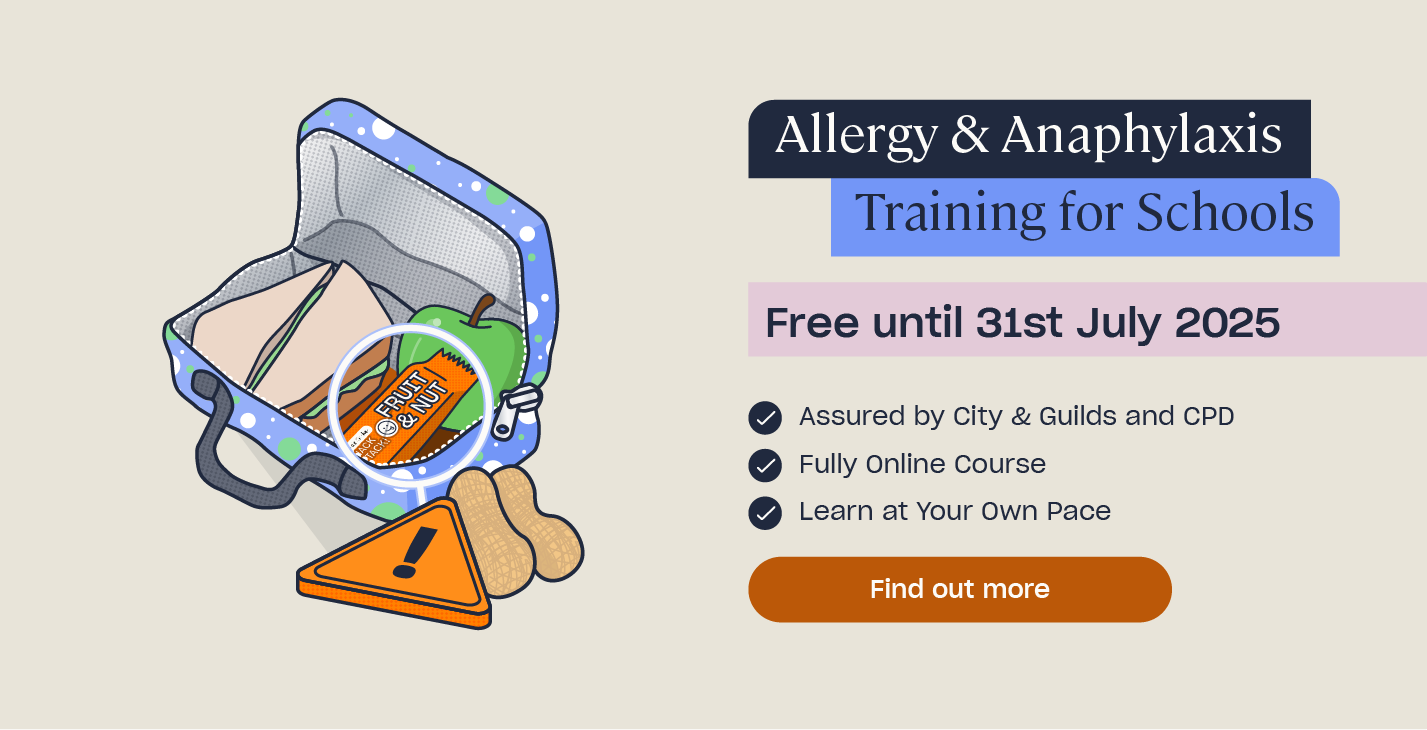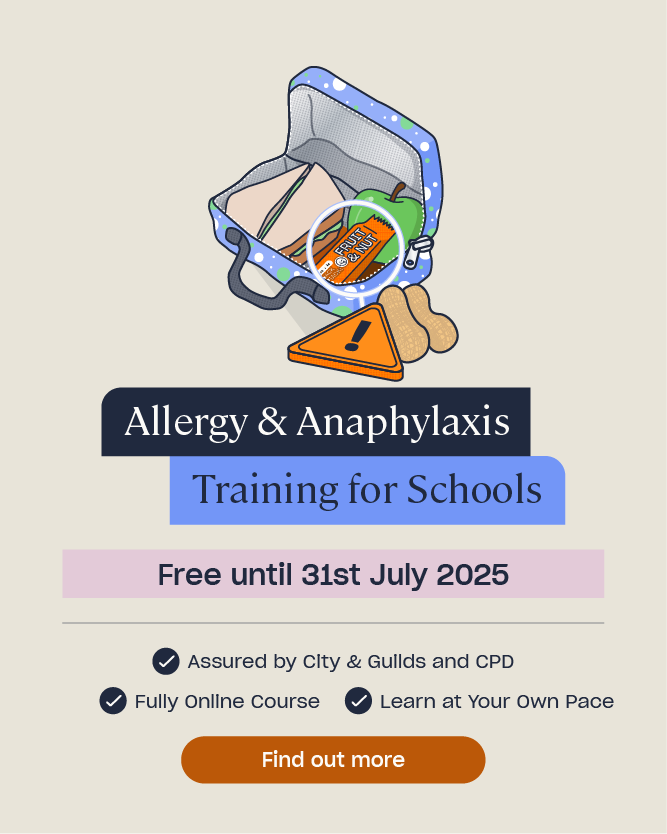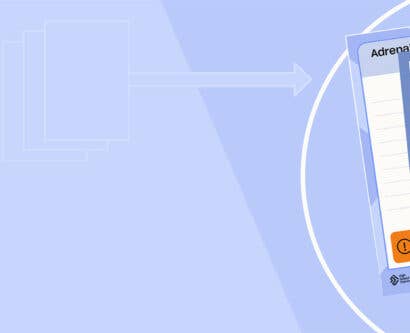How to Manage Anaphylaxis in Children
If you work with children and infants, whether it’s in an educational setting or as a childminder, or if you’re a parent or carer, then allergic reactions can be frightening to deal with. Anaphylaxis is the most serious form of allergic reaction and, if there are children in your care with allergies, it’s important that you understand how to manage them. In this article, we’ll look at what anaphylaxis is, what the most common causes of anaphylaxis are and give you some guidance on the signs to look out for and how to treat it.
What is Anaphylaxis?
Anaphylaxis is the name given to a serious, life-threatening allergic reaction. If a child in your care is experiencing anaphylaxis, then call for an ambulance on 999 before beginning to treat them, as it can quickly worsen without medical attention.
Fortunately, anaphylaxis is not too common but it can be triggered by any type of allergen, even if it seems harmless. When the body comes into contact with something it’s allergic to – whether that’s a food, medicine or insect bite – then the immune system springs into action and tries to fight off the mistaken threat. This overreaction by the immune system is sometimes referred to as an anaphylactic shock.

Anaphylaxis can affect people of all ages, including children and infants, but it’s most common as a comorbidity, i.e. the person also has another allergy-related condition, such as asthma or eczema.
It’s also important to note that anaphylaxis can occur immediately after contact with an allergen but it can also take several hours before symptoms begin.
Anaphylaxis Vs Anaphylactic
There are a few important definitions to understand surrounding the terminology related to allergies:
- Anaphylaxis is the name of the condition whereby the body’s immune system has a severe overreaction to an allergen.
- An anaphylactic reaction is the name given to the reaction the body has when it comes into contact with an allergen.
- Biphasic anaphylaxis is the name given to a secondary allergic reaction after treatment for anaphylaxis has been given, without any further exposure to the allergen. A biphasic anaphylactic reaction usually happens around 10 hours after the first attack.
- An allergic reaction is the name given to a less severe reaction to an allergen. The symptoms of an allergic reaction are usually milder than those of anaphylaxis and, whilst uncomfortable, are not often life-threatening.
Causes of Anaphylaxis
Anaphylaxis in children can be triggered by any type of allergen. Sometimes the allergen is obvious but sometimes it’s unknown what has caused the anaphylactic reaction, especially with younger infants who cannot tell you what’s wrong.
The most common causes of allergic reactions in children are:
- Food – there are 14 named food allergens to be aware of, including nuts, peanuts, dairy, fish, gluten and soya. Peanut allergies are particularly common amongst young children.
- Medicines – including antibiotics like penicillin and anesthetics.
- Insects – including stings from wasps and bees or bites from mosquitoes or ants.
- Latex – a type of rubber found in disposable gloves, balloons, elastic, some nappies and teething toys.

To help reduce the causes of anaphylaxis in your setting or home, follow the tips below:
- Always check food ingredients lists carefully if you have a child in your care with a known food allergy.
- Keep in mind that some foods can contain traces of allergens, so be vigilant and don’t assume it’ll be ok.
- If you go out to eat or buy snacks on the go, let staff know about the food allergy so they can take measures to avoid the specific ingredient.
- Be aware of the risk of cross-contamination causing anaphylaxis, as the child doesn’t even have to come into direct contact with their allergen to have a reaction.
- If you come across stinging or biting insects, move away from them slowly and avoid swatting them or disturbing them, as this could trigger a sting or bite.
- When playing outside, particularly in summer, use an insect repellent suitable for children.
- Ensure all members of staff that work with children are aware of specific children’s allergies and what they need to avoid.
Looking to Learn More?
For school staff, knowing how to recognise allergies and anaphylaxis, prevent allergic reactions from happening and take care of children with allergies is essential. Our Allergy & Anaphylaxis Training for Schools will teach you all you need to know about this important subject.
Signs of Anaphylaxis in Children
Symptoms of anaphylaxis can develop very quickly after a child has had contact with something they’re allergic to. Common signs of anaphylaxis in children to look out for include:
- Difficulty breathing, fast breathing, noisy breathing.
- Difficulty swallowing.
- A swollen tongue, throat, lips, eyes, hands or feet.
- Wheezing and coughing.
- An itchy, red, swollen and/or raised rash.
- Feeling tired, confused, faint or dizzy.
- Going limp, floppy or unresponsive.
- Fussiness or inconsolable crying amongst infants.
- Excessive drooling in babies.
- A fast or irregular heartbeat.
- Cold skin, pale skin or blue/grey skin, often on the lips or tongue
- Stomach pain, nausea, vomiting.
- Collapse and unconsciousness.
How to Treat Anaphylaxis
In all cases, an ambulance must be called or the child must be taken to hospital if they are experiencing anaphylaxis. To treat anaphylaxis, the hospital will then give the child adrenaline via an injection or drip, oxygen or fluids via a drip.

Whilst waiting for an ambulance to arrive, follow these steps to help a child experiencing an anaphylactic reaction:
- If the child has an auto-injector (like an EpiPen), then use that immediately by following the instructions on the injector.
- Lie the child down with their legs raised to help blood flow back to the heart.
- If the child is struggling to breathe, help them to sit up slowly for a minute and then lay them back down again. Avoid sudden changes in position and don’t allow the child to stand up, as this could lower their blood pressure.
Find out more vital information on using an adrenaline auto-injector (AAI) in our article: Guidance on Adrenaline Auto-Injectors.
As someone who works with or cares for children and infants, it’s essential that you recognise the causes of anaphylaxis in children and the signs of anaphylaxis in children, as well as how to treat anaphylaxis should it happen. Severe allergic reactions can be life-threatening, so knowing how to respond appropriately and manage the condition is vital.
Further Resources:
- Allergy & Anaphylaxis Training for Schools
- Food Allergy Awareness Posters for Schools
- Spotting the Signs of an Allergic Reaction to Food
- Guidance on Adrenaline Auto-Injectors











